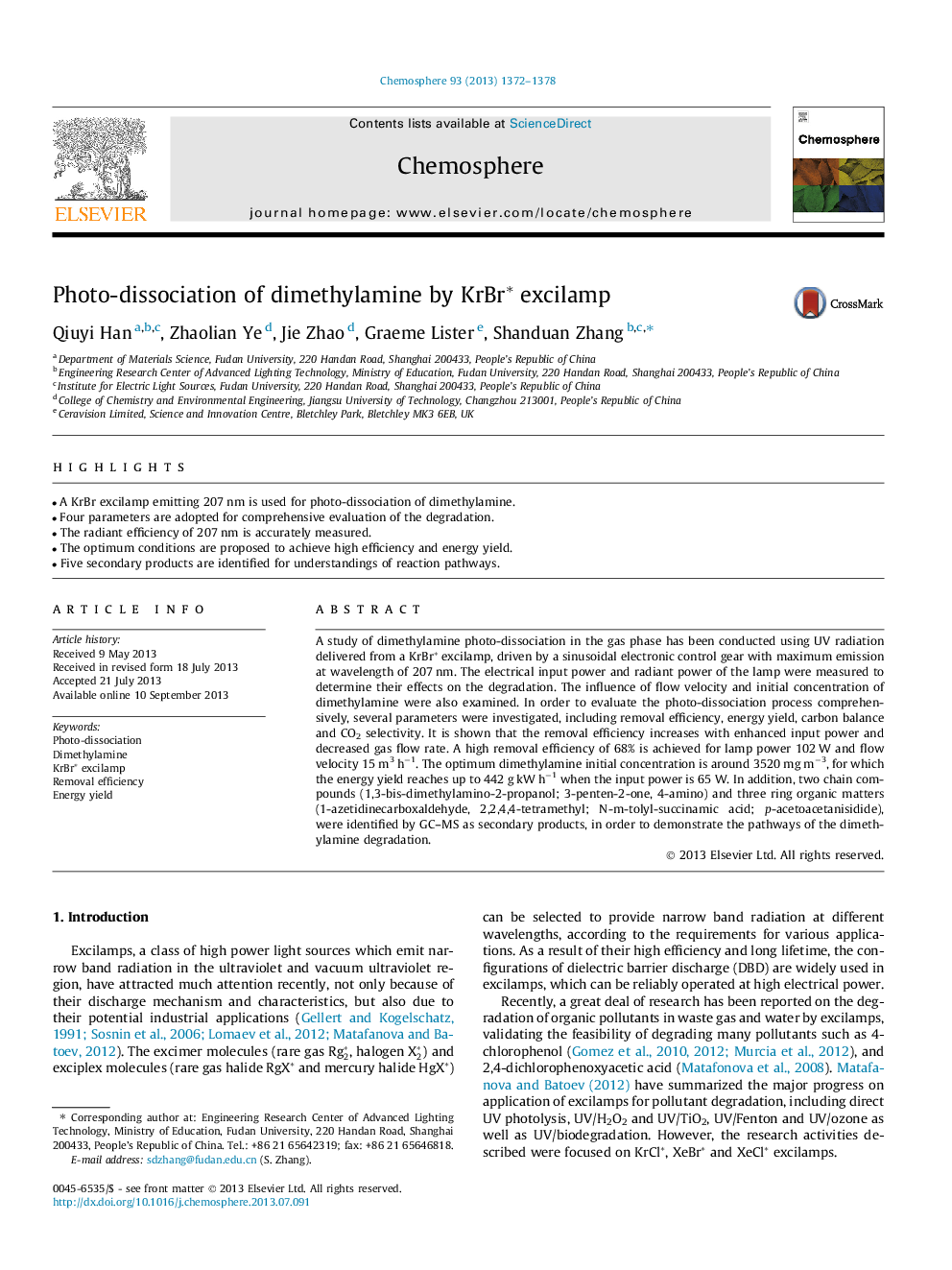| Article ID | Journal | Published Year | Pages | File Type |
|---|---|---|---|---|
| 4409195 | Chemosphere | 2013 | 7 Pages |
•A KrBr excilamp emitting 207 nm is used for photo-dissociation of dimethylamine.•Four parameters are adopted for comprehensive evaluation of the degradation.•The radiant efficiency of 207 nm is accurately measured.•The optimum conditions are proposed to achieve high efficiency and energy yield.•Five secondary products are identified for understandings of reaction pathways.
A study of dimethylamine photo-dissociation in the gas phase has been conducted using UV radiation delivered from a KrBr* excilamp, driven by a sinusoidal electronic control gear with maximum emission at wavelength of 207 nm. The electrical input power and radiant power of the lamp were measured to determine their effects on the degradation. The influence of flow velocity and initial concentration of dimethylamine were also examined. In order to evaluate the photo-dissociation process comprehensively, several parameters were investigated, including removal efficiency, energy yield, carbon balance and CO2 selectivity. It is shown that the removal efficiency increases with enhanced input power and decreased gas flow rate. A high removal efficiency of 68% is achieved for lamp power 102 W and flow velocity 15 m3 h−1. The optimum dimethylamine initial concentration is around 3520 mg m−3, for which the energy yield reaches up to 442 g kW h−1 when the input power is 65 W. In addition, two chain compounds (1,3-bis-dimethylamino-2-propanol; 3-penten-2-one, 4-amino) and three ring organic matters (1-azetidinecarboxaldehyde, 2,2,4,4-tetramethyl; N-m-tolyl-succinamic acid; p-acetoacetanisidide), were identified by GC–MS as secondary products, in order to demonstrate the pathways of the dimethylamine degradation.
